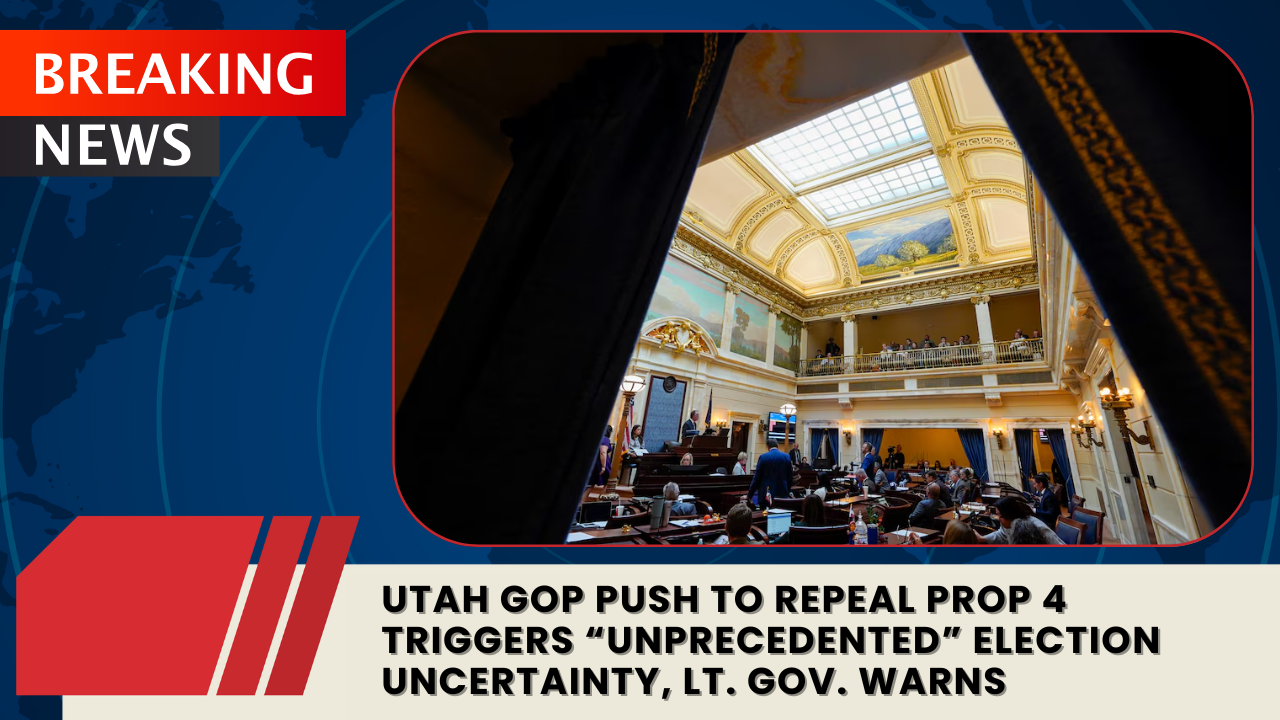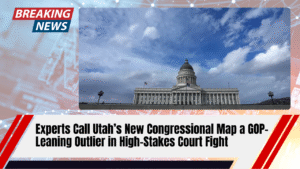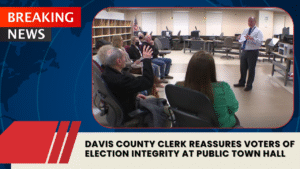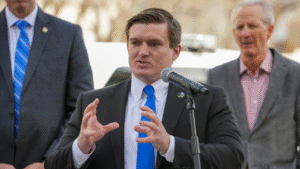Utah Republicans launched a two-track effort this week to undo both Proposition 4 (Better Boundaries) and the brand-new congressional map the Legislature adopted on Oct. 6 under court order. The move—an initiated referendum to halt the new map and an indirect initiative to repeal Prop 4—has Utah’s top elections official sounding alarms about timing, legality, and voter confusion ahead of the 2026 U.S. House races.
What the GOP filed—and why it matters
- Referendum on the new map: Party leaders, including AG Derek Brown and former Rep. Rob Bishop, filed to put the Oct. 6 map to a statewide vote. If the referendum qualifies, the map is paused for 2026, instantly throwing candidate filing and voter information into flux.
- Indirect initiative to repeal Prop 4: The party also invoked a rarely used process to force a legislative vote to repeal Prop 4, the 2018 anti-gerrymandering initiative voters approved. Their theory: a fresh (indirect) initiative can supersede Prop 4 and restore the 2021 map.
Lt. Gov. Henderson: deadlines in jeopardy
Lt. Gov. Deidre Henderson (a Republican) called the maneuver “completely unprecedented”, warning it injects “chaos and confusion” into a calendar that already required a final map by Nov. 10 to prepare for the Jan. 2, 2026 candidate filing period.
Complicating factors include:
- Signature and verification windows for petitions (clerks get three weeks to verify; signers get 45–90 days to withdraw, depending on the pathway).
- Possible certification late December or later, leaving no operative map even as filing opens.
- Court orders barring use of the 2021 map and voiding non-compliant boundaries under Prop 4—yet the referendum would also freeze the Oct. 6 map.
How Utah got here: courts and compliance
- In 2024, the Utah Supreme Court held that voters have a constitutional right to legislate by initiative and found lawmakers violated that right by effectively gutting Prop 4.
- In August 2025, Judge Dianna Gibson ruled the current (2021) congressional lines void under Prop 4 and ordered a compliant map for 2026—prompting the Legislature to pass the Oct. 6 map under protest.
- The Utah GOP now seeks to repeal Prop 4 and neutralize the court-mandated map.
Legal pushback from Prop 4 defenders
Plaintiffs including the League of Women Voters and Mormon Women for Ethical Government filed to block the GOP’s indirect initiative, arguing it’s unconstitutional because the process is statutory, not constitutional, and cannot abridge voters’ fundamental initiative rights. They’re also asking Henderson to disqualify the repeal petition before signatures are gathered.
The numbers game—and a ticking clock
- Referendum: ~140,748 signatures (8% of registered voters) statewide plus 8% in 15 of 29 Senate districts within 30 days of circulation start.
- Indirect initiative: 70,374 valid signatures by Nov. 15 after fiscal analysis and seven public town halls (with advance notice) before signatures can even start.
- If the indirect initiative succeeds, the GOP-controlled Legislature could repeal Prop 4 and, per a clause in the Oct. 6 map bill, snap back to the 2021 map—setting up further court fights.
National stakes and moving pieces
The battle lands amid national hardball over House control. Republicans have pursued favorable redraws elsewhere; Democrats have responded in blue states. In Utah, even two GOP protest votes and two absences in the Senate kept the Oct. 6 map from a supermajority that would have insulated it from referendum.
What could happen next
- If the referendum qualifies, the Oct. 6 map is on hold, but the 2021 map is barred—leaving Utah without usable lines as filing opens.
- If the indirect initiative advances and the Legislature repeals Prop 4, courts could again intervene.
- The Legislature could delay filing deadlines in a special session to reduce disruption.
- Expect more lawsuits from voters, candidates, and advocacy groups, regardless of which lever moves first.
Bottom line: Utah’s 2026 House races face a volatile mix of petitions, court orders, and compressed timelines. As Lt. Gov. Henderson put it, candidates and voters need certainty—but the state may not have it until well into winter.



